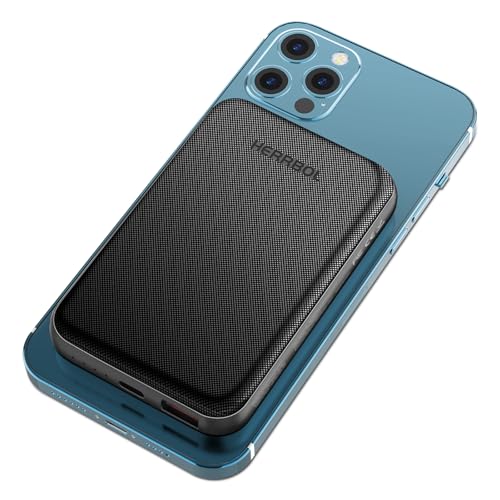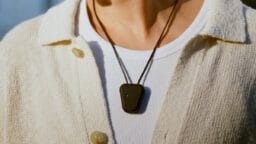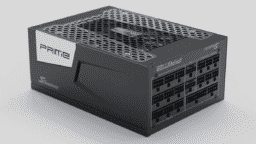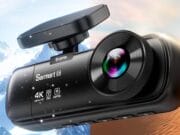Everyone needs to charge their gadgets on the go. You might run out of battery when you’re away from a plug. In 2025, finding the best power bank is key to keeping your devices alive.
This post talks about ten great choices and why some are better for different needs, like camping or fast charging. Keep reading to find out how to choose the right one for you. Find your perfect match here!
What is a Power Bank?

A power bank is a small device you can carry to charge your phone and other gadgets when there’s no outlet around. It stores energy so you can plug in devices like smartphones, tablets, and even laptops while on the move.
Power banks come in different sizes and have various features. Some are made just for phones, while others can charge bigger items like laptops or have special abilities like fast charging.
When choosing one, think about how much power it holds (measured in mAh), how quickly it can charge your device (look for terms like “fast charging”), and if it fits easily in your bag or pocket.
There are also power banks with more than one USB port so you can charge multiple devices at the same time. Safety is important too; good ones protect against overcharging or getting too hot.
Top 10 Best Power Banks (Portable Chargers) of 2025
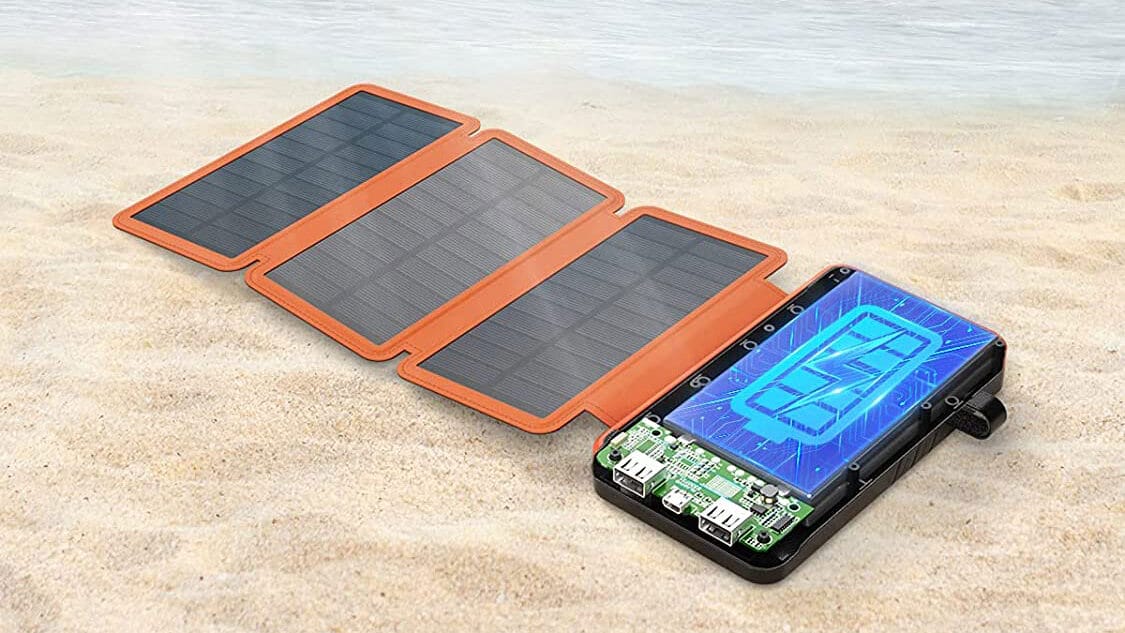
Finding the right portable charger ensures your devices never run out of power. Here are the top 10 power banks of 2025, each offering unique benefits for gadget lovers.
1. NZKEEYZI VX5L MagSafe Slim Charger
- Product name: NZKEEYZI for MagSafe Portable Charger, 0.3″ Ultra Slim 5000mAh Magnetic Power Bank, 25W PD Fast Charging Battery Pack with Built-in Cable, Travel Battery Bank for for iPhone 16/15/14/13/12, White.
- Brand: NZKEEYZI.
- Manufacturer: shenzhenshilanhankejiyouxiangongsi.
- Model Number: VX5L.
- Price: $199.99.
- Product Link: View Product in Detail.
Key Highlights
The NZKEEYZI for MagSafe Portable Charger is a marvel of modern charging technology. Its 0.3″ ultra-slim frame makes it incredibly portable, perfect for those on the move. With a 5000mAh capacity, it ensures your iPhone stays powered through your busiest days.
MagSafe compatibility enhances its functionality, providing up to 1.7 full charges for newer iPhones. This compact charger offers swift, 25W Lightning charging for Apple devices and 15W Type-C for Android, meeting varied tech needs effortlessly.
Crafted for the traveler, its elegant design and smart features make it not just efficient, but also a stylish accessory. With safety protocols like overcharge protection and innovative heat management, it promises reliability.
Pros
The charger’s standout advantage is its ultra-slim design coupled with substantial power output. It offers fast charging and seamlessly fits into your pocket, making it ideal for busy professionals and adventurers alike.
Cons
However, its magnetic feature is limited to MagSafe-compatible and certain magnetic cases, reducing its versatility with all phone cases, particularly non-magnetic ones.
Verdict
Overall, the NZKEEYZI VX5L excels in performance and aesthetics. If you frequently need a dependable, sleek power source on the go, this charger is a compelling choice. Its precision engineering and stylish design make it a standout addition to your tech arsenal.
2. Compact Powerbank 15000mAh Fast Charger
- Product name: Portable Charger Power Bank – 15000mAh Battery Pack Portable Phone Charger with Built in Cables 22.5W Fast Charging Powerbank Compatible with iPhone Android Samsung Phone, Travel Camping Essential.
- Brand: CFIAI.
- Manufacturer: Shenzhen Joway Power Supply Co., Ltd..
- Model Number: PB-08.
- Price:
$129.99$21.99. - Product Link: View Product in Detail.
Key Highlights
The CFIAI Portable Charger Power Bank, model PB-08, offers a robust 15,000mAh capacity, making it indispensable for travel and outdoor excursions. It features a sleek design with built-in cables, eliminating cable clutter and ensuring compatibility with a variety of devices.
This power bank is a powerhouse with its 22.5W fast charging capability, rapidly boosting device batteries. Its compact size and lightweight build make it an ideal travel companion, fitting seamlessly into bags or pockets.
With the ability to charge four devices at once, it provides exceptional convenience. The real-time LED display ensures users stay informed of power levels, reducing anxiety about unexpected shutdowns.
Pros
The CFIAI power bank stands out with its versatile charging options and exceptional durability. Built-in cables and multiple safety features ensure reliable, tangle-free usage, making it a must-have for both travelers and tech enthusiasts.
Cons
However, the absence of an AC plug might mean additional gadgetry for recharging, which could be inconvenient for some users during extended trips away from outlets.
Verdict
The CFIAI Portable Charger Power Bank is an essential gadget for those seeking reliable and rapid charging solutions on the go. Its impressive features and compact design make it a wise investment for modern digital lifestyles.
3. SolarMax Power Bank 49800mAh 22.5W
- Product name: ERRBBIC Solar Charger Power Bank 49800mAh, 22.5W Portable Charger, 15W Wireless Charging, Solar Panel Charger, Built-in Four Cable, with USB C for Cell Phones, with Dual Flashlight for Camping.
- Brand: ERRBBIC.
- Manufacturer: Shenzhen Zhong xing Wei Technology Co.,Ltd..
- Model Number: PS92W.
- Price:
$59.99$35.99. - Product Link: View Product in Detail.
Key Highlights
The ERRBBIC Solar Charger Power Bank is a powerhouse for on-the-go energy needs. With a staggering 49,800mAh capacity, it effortlessly keeps devices alive for extended periods. Designed with outdoor enthusiasts in mind, its durability ensures reliability in diverse settings.
Equipped with multiple outputs, including fast wireless and wired charging, it accommodates varied charging requirements. The added bonus of built-in cables reduces clutter, making it user-friendly for tech-savvy individuals.
A robust solar panel and dual flashlight make it an indispensable companion for outdoor escapades or emergencies. Its rugged design confirms it’s built to withstand the elements while delivering consistent performance.
Pros
The ERRBBIC excels in versatility and durability. Its massive capacity powers multiple devices while the efficient solar panel and built-in cables ease charging. Safety certifications enhance trust, making it a reliable choice for both urban and wilderness scenarios.
Cons
The solar charging speed may not match conventional charging methods, potentially requiring significant sunlight exposure. Its size might also be cumbersome for some, posing challenges in portability for everyday use.
Verdict
Overall, the ERRBBIC Solar Charger Power Bank proves to be a dependable, multifaceted gadget. Ideal for both adventurers and city dwellers, it offers safety and efficiency, making it a premium choice for sustained power supply.
4. MagCharge SlimPower Bank 5000mAh
- Product name: Magnetic Portable Charger, 5000mAh Ultra Slim Mag Power Bank, Wireless Battery Pack with USB C Cable, 20W PD Fast Charging, Magnetic Phone Charger for iPhone 16/15/14/13/12 Pro/Pro Max/Mini Series.
- Brand: Dbasne.
- Manufacturer: Shenzhen LingJi Creative Technology Co., Ltd.
- Price: $159.99.
- Product Link: View Product in Detail.
Key Highlights
Dbasne’s Magnetic Portable Charger is revolutionizing how we charge on the go. This ultra-slim power bank offers a magnetic wireless fast charge option, instantly connecting to your device with ease. Designed for modern needs, it enhances charging speed by 200% compared to traditional methods.
Its sleek design is credit card-sized, making it exceedingly portable. Despite its compactness, it features a robust 5000mAh capacity, allowing for 1.5 full iPhone charges. Ideal for travelers, it complies with international air travel standards, ensuring a hassle-free experience.
Safety is paramount with 12-layer protection, safeguarding against overvoltage and temperature extremes. Smart charging optimizes battery life, while LED indicators keep you informed. It’s a thoughtful blend of innovation and efficiency.
Pros
The Magnetic Portable Charger boasts remarkable advantages. Effortless magnetism ensures a secure connection, even during movement. Its dual charging modes cater to varied needs, while the ultra-thin design fits seamlessly into daily life. Enhanced safety and international compliance make it a reliable companion.
Cons
A potential drawback is its specificity to certain iPhone models, requiring a magnetic case for broader compatibility. Additionally, while slim, some may prefer even greater battery capacity. Its tailored design may limit universal appeal.
Verdict
Dbasne’s charger excels as a trustworthy travel accessory, merging cutting-edge technology with convenience. Despite minor limitations, its innovation in speed and safety makes it an excellent choice for those seeking efficiency in a compact form.
5. ZZI N1 Slim Power Bank 32000mAh
- Product name: ZZI Portable Charger, 32000mAh 5V/3A Power Bank with Dual 22.5W High-Speed Charging, Thinnest Travel Essentials with LED Display, Battery Pack Compatible with iPhone Samsung iPad etc (Black).
- Brand: ZZI.
- Manufacturer: Dongguan Ganna Electronic Technology Co., Ltd..
- Model Number: N1.
- Price:
$199.99$25.99. - Product Link: View Product in Detail.
Key Highlights
The ZZI Portable Charger N1 boasts an incredible 32000mAh capacity, yet maintains an impressively slim profile. Ideal for travel, it charges an iPhone 14 five times or a Samsung S22 four times. An LED display keeps you informed about power levels, making it a reliable companion for extended journeys.
Equipped with dual 22.5W fast charging, this power bank charges devices at lightning speed. Its USB-C port provides both input and output, and additional ports offer versatile connections. Charging multiple devices simultaneously has never been easier, ensuring you’re always powered up.
Designed for maximum portability, the charger is thinner than a deck of cards. Its 9-layer safety system protects against overheating and short circuits. Compatible with an array of devices, the N1 is a must-have for tech-savvy travelers.
Pros
The charger’s rapid 22.5W fast charging and massive capacity make it extraordinarily efficient. Its sleek design and universal compatibility elevate it as the ultimate travel essential. Bid farewell to battery anxiety with this formidable power apparatus.
Cons
However, the considerable 32000mAh capacity slightly increases weight, which may be cumbersome for some users. Despite its slimness, those seeking ultra-light options might find it bulky for minimalistic travel.
Verdict
Overall, the ZZI Portable Charger N1 is a powerful, indispensable gadget for modern adventurers. Its remarkable capacity, swift charging, and slim form make it a standout choice for anyone looking to keep their devices reliably charged on the go.
6. MagCharge 15W Wireless Power Bank
- Product name: HERRBOL Magnetic Wireless Power Bank, 10000mAh & Dual Ports, Portable Charger for MagSafe Battery Pack, 15W Fast Charging Magnetic Power Bank for iPhone 16/15/14 Series (Black).
- Brand: HERRBOL.
- Manufacturer: Dongguan Baisike Technology Co., Ltd..
- Model Number: T114B.
- Price:
$166.99$19.99. - Product Link: View Product in Detail.
Key Highlights
The HERRBOL Magnetic Wireless Power Bank exemplifies innovation with its potent blend of capacity and convenience. Offering a reputable 10,000mAh charge, it remains surprisingly lightweight. Designed for iPhone aficionados, it promises seamless compatibility with models from iPhone 12 to 16, enhancing everyday experiences dramatically.
Equipped with multifaceted charging options, this device caters to various needs. Its 15W wireless charging is joined by a robust 20W USB-C and USB-A fast charging, allowing quick recharges on the go. Whether commuting or adventuring, it effectively minimizes downtime while staying compact.
The magnetic attachment is remarkably tenacious, making this power bank ideal for active use. Its design philosophy suits travel, camping, or everyday tasks, ensuring it’s an indispensable companion for any journey. Reliable, compact, and stylish, it serves modern demands seamlessly.
Pros
Advantages include its high capacity in a compact form, catering perfectly to travelers. Its triple charging options accommodate diverse needs, while the powerful magnetic attachment grants ease during active use. The lightweight build makes it a versatile ally for adventures.
Cons
Despite its numerous strengths, the power bank’s magnetic function limits it to specific iPhone models. This specificity might deter Android users or those with older devices from fully benefiting from its capabilities.
Verdict
The HERRBOL Magnetic Wireless Power Bank is an exemplary choice for iPhone users seeking reliability and portability. While it’s tailored to specific iPhone models, its robust features and convenience warrant serious consideration for anyone looking to enhance their charging experience.
7. Nllosa TurboCharge Mini Power Bank
- Product name: Nllosa Power Bank, Small 22.5W 10000mAh Portable Charger with Built-in USB-C Cable, Fast Charging Mini Battery Pack Travel Essentials, for iPhone 16/15/14 Series,Google,Android.
- Brand: Nllosa.
- Manufacturer: Zhongshan Worth Electronic Technology Co., Ltd.
- Model Number: SP01.
- Price: $9.99.
- Product Link: View Product in Detail.
Key Highlights
The Nllosa Power Bank is a compact and efficient solution for your mobile charging needs. With a sleek design, this portable charger fits effortlessly into your travel essentials. Its 10000mAh capacity ensures your devices stay powered, whether you’re adventuring or working.
Equipped with a built-in USB-C cable, the SP01 model offers convenience with fewer cords to clutter. Fast charging capabilities mean less downtime, keeping you on the move with minimal interruption. Designed for modern devices, it’s compatible with the latest iPhone and Android models.
Its compact dimensions of 87*62*27mm and a weight of just 192g make it the ideal travel companion. Easy to handle and unobtrusive, it brings functionality and portability together, highlighting Nllosa’s commitment to quality.
Pros
The standout advantage of the Nllosa Power Bank is its fast-charging efficiency. With built-in cables and versatile compatibility, it’s an essential gadget for frequent travelers. Its small size doesn’t compromise its power, allowing for a balance of mobility and performance.
Cons
A minor limitation is the need for a higher-power cable to achieve maximum 22.5W fast charging. Additionally, a full charge is recommended initially to counteract any prior battery usage, adding a slight inconvenience for first-time use.
Verdict
Overall, the Nllosa Power Bank SP01 is a reliable and adept power source. It offers a seamless blend of portability and functionality, making it a prudent choice for those seeking an efficient and dependable charging companion on the go.
8. LENUTO Magsafe Power Bank & Stand 10000mAh
- Product name: LENUTO for Magsafe Battery Pack 10000mAh Power Bank with Foldable Stand Portable Charger,PD 22.5W Fast Charge,Travel Essential Wireless Charger for iPhone 16/15/14/13/12 Series–Black.
- Brand: LENUTO.
- Manufacturer: Daximen(Shenzhen)Technology Co., Ltd..
- Model Number: W13.
- Price: $199.99.
- Product Link: View Product in Detail.
Key Highlights
The LENUTO W13 is a sleek powerhouse designed for on-the-go charging. Its 10000mAh capacity, coupled with seamless MagSafe integration, delivers reliable power for your iPhone. Its solid foldable stand adds to its multifunctionality, making it a versatile travel necessity.
The strong magnetic hold ensures your phone remains securely charged without constant adjustments. The LED display provides instant knowledge of battery life, ensuring you’re never unexpectedly out of juice. Thoughtful design and smart safety features enhance trust in this portable charger.
Wrapped in a stylish, anti-fingerprint finish, this power bank is not just practical but elegant. Its compact design aligns with any traveler’s needs, without sacrificing powerful, efficient charging.
Pros
Unleashing fast, efficient charging, the LENUTO W13 powers your devices with a robust 22.5W output. Its dual capability to wirelessly charge or use the USB-C port makes it versatile. The foldable stand elevates both practicality and convenience, ideal for multitasking.
Cons
Despite its impressive features, its exclusive design mainly benefits iPhone users with MagSafe compatibility. Non-MagSafe users may find the magnetic features underutilized. Additionally, the reliance on technology familiarity might be challenging for less tech-savvy individuals.
Verdict
The LENUTO W13 is a stellar companion for those needing reliable, swift charging. With its myriad of features, it’s a trustworthy ally for travelers and professionals alike, seamlessly blending functionality with style. A worthy addition to any iPhone user’s toolkit.
9. MagSafe 12000mAh Wireless Power Bank by CHUSII
- Product name: for Magsafe Portable Charger, 12000mAh Wireless Magnetic Power Bank with Stand and PD 20W Fast Charging, for Magsafe Battery Pack Compatible with iPhone 16/15/14/13/12 Series,Travel Camping Essential.
- Brand: CHUSII.
- Manufacturer: Daximen (Shenzhen) Technology Co., Ltd..
- Model Number: W16.
- Price:
$199.99$26.99. - Product Link: View Product in Detail.
Key Highlights
The CHUSII W16 Portable Charger offers an innovative blend of power and convenience. Designed for iPhone 16/15/14/13/12 series, it ensures a secure magnetic attachment that snaps into place instantly. With a 12,000mAh capacity, this charger eliminates the need for outlets during your travels.
Empowered by a wireless design, the W16 cuts down on cable clutter. Seamless charging begins as soon as you attach it, allowing for uninterrupted activities. Whether you’re gaming or on the go, it delivers freedom from common charging hassles.
This all-in-one charger supports both wired and wireless methods. It backs multiple protocols including PD 20W and Quick Charge 3.0. The LED display and built-in kickstand provide real-time info and propped-up viewing for added convenience.
Pros
The CHUSII W16 excels in providing versatility and reliability. Its magnetic attachment and multi-charging options make it an indispensable travel companion. Safety features further enhance its appeal, allowing users to charge worry-free.
Cons
Despite its many strengths, the W16 is incompatible with non-magnetic phone cases. This limitation might restrict some users seeking a universal charging solution.
Verdict
The CHUSII W16 sets a new benchmark for portable charging solutions, seamlessly combining functionality with safety. Ideal for iPhone users, it provides a dependable power source for various scenarios, making it a worthy investment.
10. Crazywhale Power Bank PB100
- Product name: Portable Charger Power Bank with Built-in Cables, 22.5W Fast Charging 10000mAh Phone Charger, Travel Battery Pack Slim Battery Bank with Smart LED Display for iPhone, Android & USB-C Devices (Black).
- Brand: Crazywhale.
- Manufacturer: Shenzhen Lang Shui Innovative Technology Co.,Ltd.
- Model Number: PB100.
- Price:
$32.99$19.99. - Product Link: View Product in Detail.
Key Highlights
Crazywhale’s PB100 Portable Charger offers a remarkable blend of innovation and functionality. The built-in cables eliminate the inconvenience of carrying extra cords. With an impressive 10,000mAh capacity, it ensures your devices remain powered throughout the day. The sleek design and smart LED display add a touch of sophistication.
This charger stands out with its 22.5W fast charging, cutting down wait times significantly. It’s designed to accommodate both iPhone and Android users, making it a universal companion. Multi-device charging lets you power up to three gadgets simultaneously, enhancing its practicality for tech enthusiasts.
Whether you’re traveling or simply on-the-go, the PB100’s compact design fits seamlessly into your lifestyle. It’s an ideal travel and camping essential, ensuring you’re never left without power when you need it most.
Pros
The key advantage of the Crazywhale PB100 is its versatility. With built-in cables and bi-directional charging, it caters to multiple devices, offering unrivaled convenience. Fast charging capabilities ensure minimal downtime, keeping your devices ready for use in no time.
Cons
A minor drawback is the 10,000mAh capacity, which might require frequent recharges for power users. For those relying heavily on their devices, a larger capacity might be more suitable.
Verdict
In conclusion, the Crazywhale PB100 is a reliable and efficient power bank. Its fast charging, multiple outputs, and portability make it an excellent choice for daily use and travel, ensuring you stay connected wherever your adventures take you.
Different Types of Power Banks and Their Use Cases
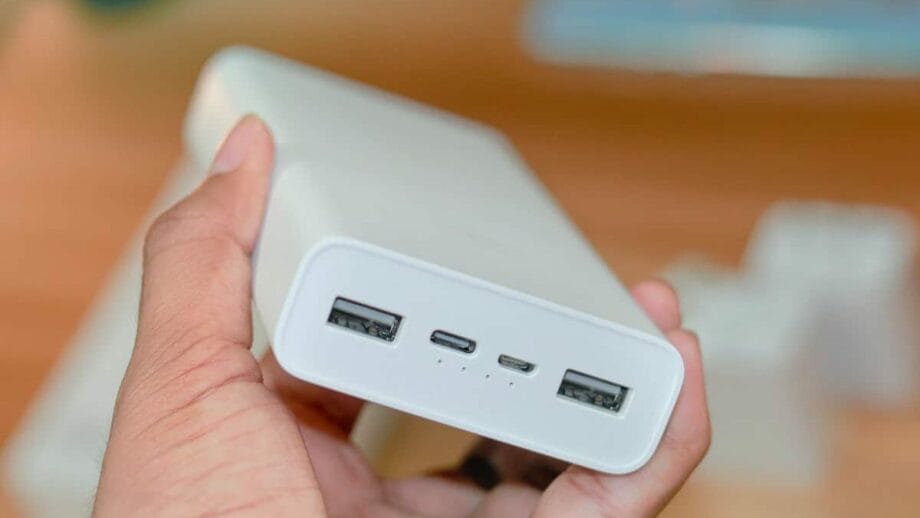
Different types of portable chargers fit different needs – some are for daily use, others charge devices fast, a few offer lots of power for long trips or camping, while solar ones support charging without needing a plug and those designed for laptops handle bigger gadgets.
Also, wireless chargers add ease by removing cords. Each kind meets distinct demands, encouraging users to find their perfect match.
1. Standard Power Banks
Standard power banks meet the daily charging needs of people on the move. These devices are perfect for keeping smartphones, tablets, and other small gadgets powered throughout the day.
With capacities like 10,000 mAh found in models such as the Nimble Champ (Series 2) and Belkin BoostCharge Power Bank 10K, users can recharge their phone multiple times. They are light too; for example, Nimble weighs just 6.2 ounces.
These power banks often have features like USB-A ports for easy connection to a wide range of devices. Prices are affordable too; you can get a quality power bank like the Nimble Champ (Series 2) for around $25 on Amazon or the Belkin BoostCharge Power Bank 10K for $22 there.
This makes them accessible options for gadget buyers looking to stay connected without breaking the bank.
2. Fast-Charging Power Banks
Fast-charging power banks save time. They fill up phones and tablets quickly. Imagine needing a quick charge before heading out. These power banks make it happen fast. People with busy lives love them because they don’t have to wait long for their devices to charge.
For example, the Anker Nano Power Bank can push out 22.5 watts of power. That means it charges devices faster than regular chargers. And the Sharge Shargeek 170 Power Bank has an even higher wattage at 170 watts, recharging itself in just one hour.
With these kinds of speeds, users can get their gadgets powered up in no time, keeping them connected throughout the day without delay.
3. High-Capacity Power Banks
High-capacity power banks like the Anker 737 and UGreen 145W are must-haves for travel and camping. The Anker 737 has a huge battery of 24,000 mAh and gives out 140 watts. It weighs only 1.4 pounds.
Then, there’s the UGreen with a capacity of 25,000 mAh, offering up to 145 watts for just a bit over one pound. These gadgets make sure your devices stay charged during long trips away from wall sockets.
These powerful chargers can refill smartphones, tablets, and even laptops multiple times on a single charge. For example, with their big batteries and fast output rates, they handle heavy charging tasks without trouble.
Their portability makes them easy to pack along with your gear for outdoor adventures or travels around the world. With features like these, staying connected in wild places is simpler than ever.
4. Solar Power Banks
Solar power banks are great for charging your gadgets without harming the planet. These chargers use sunlight to store energy. Then, you can use this energy to charge phones, tablets, and even some smaller laptops.
You don’t need a plug or electricity from the grid. This makes solar power banks perfect for outdoor activities like camping or hiking.
For example, the Goal Zero Venture 35 + Nomad 10 Kit is built for adventures outside. It lets you charge devices using just sunlight. With these solar chargers, you always have a way to keep your gadgets running.
Plus, you help reduce waste and save on electricity costs. Solar power banks are smart choices for eco-friendly charging anywhere you go.
5. Laptop Power Banks
Laptop power banks are not just for phones anymore. They can charge laptops too. For example, the Mophie Powerstation Pro AC is perfect for charging your laptop when you’re on the go.
Another one, the GoalZero Sherpa 100, has a big battery of 25,600 mAh and can give out 100 watts of power. It costs $300 but you might find it for $250 on Amazon.
These devices make it easy to keep working or playing without worrying about finding a plug. You can take them camping or on long trips. Laptop power banks have different ports like USB-C and USB-A to connect multiple types of cables and charge various gadgets at once.
They make sure your laptop stays charged wherever you are.
6. Wireless Power Banks
Wireless power banks offer a simple method for charging gadgets devoid of cords. Simply place your phone on top, and it initiates charging. This method eradicates the trouble of tangled cables or searching for the apt plug.
For instance, the Anker MagGo Power Bank provides 10 watts of wireless output, apt for phones, and even accommodates the Apple Watch with a distinct stand.
These devices are perfect for individuals constantly on the go. The Satechi Duo Wireless Charger charges phones but also incorporates a spot for earbuds at 5 watts. With these chargers, you have the capability to power numerous devices simultaneously, making them perfect travel partners or essential workspace items.
They transform any spot into a charging station devoid of the necessity for extra cables or adapters.
10 Key Features to Consider Before Buying a Power Bank
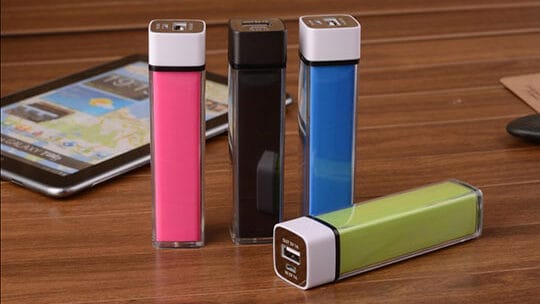
Choosing the right power bank means looking at key features that match your needs. Consider things like how long it lasts, how fast it charges devices, and if it fits with the gadgets you own.
1. Battery Capacity
Battery capacity is key for picking the right power bank. It’s measured in mAh (milliampere-hour). If you have a smartphone, a 10,000 mAh power bank can charge it up to three times. This means less worry about running out of battery during the day.
Think about what you’ll charge with the power bank. Just phones? Or do you need it for laptops and tablets too? Larger devices need more power, so look for higher mAh numbers if that’s your plan. Always check your device’s battery size to match with a power bank that can fill it several times over.
2. Output Power and Charging Speed
Output power and charging speed are key for fast charging. They’re measured in watts (W). This means more watts get your device’s battery full faster. Imagine you have a wall charger that uses USB-C Power Delivery. It can push out 20W. This will charge your iPhone much quicker than an old 5W charger.
Volts (V) and amps (A) also affect how quickly you charge. Think of volts as the water pressure in a hose, and amps as the hose size. More of both can fill a pool faster, right? So, when your power bank says it has high output in volts and amps, it means it can send more power to your phone or laptop quickly, getting them charged up without waiting too long.
3. Input Charging Speed
Input charging speed tells us how quickly a power bank can recharge itself. For instance, the Sharge Shargeek 170 Power Bank fills up in just one hour. This means you don’t have to wait long to use it again. Fast input charging is great for people on the move.
Most good power banks need only a few hours to recharge fully. Look for one with USB-C ports since they often charge faster than older types. A fast-charging cable can also make a big difference. This keeps your gadgets ready without long waits.
4. Number of Ports
Having many ports on a power bank lets you charge more than one device at the same time. For example, the GoalZero Sherpa 100 comes with options like 2 USB-C ports, 2 USB-A ports, and even wireless charging.
This means you can power up your phone, tablet, and smartwatch all together. It makes life easier for people who carry multiple devices.
Choosing a power bank with multiple charging ports is smart for families or friends traveling together. Everyone can use it at once without waiting their turn. Plus, having different types of ports ensures that all kinds of devices are compatible.
Whether it’s USB-A or USB-C gadgets, everyone gets their battery filled up quickly and easily.
5. Compatibility with Devices
Power banks need to work well with many devices. This means your phone, tablet, or laptop should charge easily when you plug it in. Some power banks are made for specific brands like iPhones and support MagSafe, such as the Anker MagGo.
Others fit a variety of USB ports for plenty of tech items. For example, the INIU PD 22.5W is great for charging phones fast but might not be quick enough for newer Android models that need more power. It’s key to check if the portable charger matches your device’s needs before buying one.
Look at what kind of port it has — USB-A, USB-C — and its output power to make sure it gives your gadgets the right boost they need without waiting too long.
6. Size and Portability
Choosing the right power bank means looking at size and portability. For example, Nimble Champ (Series 2) weighs only 6.2 ounces. It’s light enough to carry everywhere without feeling heavy.
But, if you want something even smaller, consider the TravelCard Plus. It’s wallet-sized with a capacity of 3,000 mAh, making it perfect for quick charges on the go.
You need to think about how you will use your charger. If traveling is a big part of your life, picking a lightweight and compact charger makes sense. On daily commutes or short trips, small chargers like Nimble Champ fit easily in pockets or small bags.
But for longer travels where charging stations are scarce, bigger battery packs with more capacity might be better despite being heavier. Always match the charger’s size with your lifestyle needs for seamless charging experiences wherever you are.
7. Safety Features
Power banks need safety features to keep you and your devices safe. They come with built-in cut-off mechanisms. This means they stop charging when full, preventing overcharge. If a power bank gets too hot, it will shut down to avoid overheating.
In case of a short circuit, these gadgets also turn off automatically. These protections make sure the power bank lasts longer and keeps you out of danger.
I have used several portable chargers with these safety features. One time, my charger got really warm while charging my phone and iPad together. But it turned off on its own before anything bad happened.
This showed me how important such features are for everyday use. With them, I feel confident that my devices are charged safely without any risk of damage or accidents.
8. Brand
Brand trust is key when choosing a power bank. Brands like Anker and Nimble Champ stand out for their reliability. They offer a 2-year warranty on their products, showing they back the quality of their chargers. If something goes wrong, a good brand has you covered.
Having easy access to service centers matters too. You want quick help if your charger stops working. Choose brands with known customer service excellence to ensure you’re not left hanging when you need support the most. This makes all the difference in getting fast and effective help.
9. Build Quality
Good build quality means a power bank can last a long time. For example, the Gomi Power Bank is tough. It can handle falls from up to 6 feet. This shows it’s made well. A strong power bank does not break easily when you drop it or carry it around.
Choosing one with great build quality saves money over time. You won’t need to buy new ones often because they keep working year after year. Look for ones that have protection against drops and scratches. This way, your charger stays in good shape even with regular use.
10. Additional Features
LED indicators on power banks show how much charge is left, so you always know. Power banks with wireless charging let you charge your phone without any cables, just by placing it on top. This works up to 15W for devices that support Qi wireless charging.
Some power banks come with solar panels. They can charge themselves using sunlight, making them perfect for outdoor trips. Built-in cables mean you don’t have to carry extra ones around. These cables can be for different types of ports like USB-C or lightning, making these power banks very handy.
Having a power bank with these features makes life easier. You don’t need to worry about running out of battery or carrying many cables. The LED lights quickly tell you when to recharge the power bank itself.
With built-in cables and wireless charging, you can keep all your gadgets charged anytime, anywhere. And if you choose one with solar panels, even when there’s no outlet around, you can still get some power from the sun’s rays.
Conclusion

Power banks in 2025 offer lots of choices. They come as small, big, fast-charging, and even solar-powered types. Knowing what you need helps pick the right one. Features like how fast they charge, how many devices can charge at once, and safety are key.
Brands matter for quality and trust. Picking a good power bank means your devices stay charged safely when out and about.





